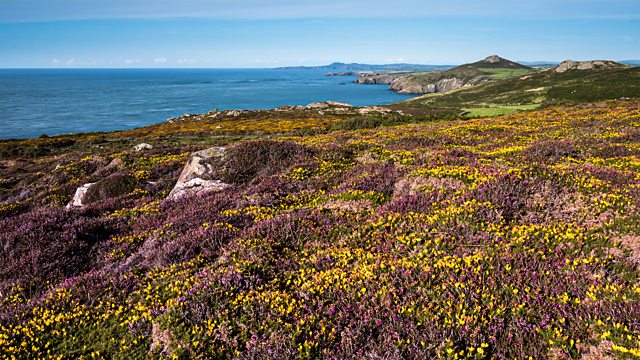
The North York Moors: Birds
As spring creeps in, the red grouse, unique to the British Isles, enjoy the young shoots of the heather that is almost all that can grow on the impervious sandstone of North Yorkshire’s moorlands.
In the north east of England lies a wild and remote moorland: 550 square miles of windswept, heather-clad uplands and deep, sheltered valleys or dales. These are the North York Moors. Over millennia, this spectacular landscape has been shaped by the elements and more recently, by people.
Remote farmsteads are dotted all across the high country. On Dale Head Farm, the Barraclough family raise tough Swaledale and Cheviot sheep, animals bred for the moorland life. They can be left out on the hill year round because over many generations, they have built up an intimate knowledge of their patch; each flock is ‘hefted’ to the land. The flocks are brought down off the moors to the shelter of the dales a couple of times each year - in the spring for lambing and again in the summer, to be shorn of their heavy winter coats. The best shearers can clip 300 sheep in a day.
The bedrock of this vast upland plateau is sandstone, a tough and impervious rock. Water can’t drain easily, so the moors are boggy, and the soil poor and acidic. Heather is one of the few plants that can tolerate such hostile conditions, creating a very rare habitat. Three-quarters of all heather moorland is found in the British Isles. And where there is heather, there are red grouse. These game birds are only found in Britain and are completely dependent on the heather, feeding on the young shoots and using thicker older patches to shelter from the weather and for nesting. Other ground-nesting birds like curlews also thrive here.
Grouse are important for moorland estates because grouse-shooting is big business. To boost grouse numbers, the heather is intensively managed. Every winter, gamekeepers burn small patches or ‘swiddens’ of old, woody plants to promote fresh growth. The mosaic of old and new heather is the perfect mix of food and shelter for the grouse to feed and rear their numerous chicks.
The moors are home to the emperor moth, one of the largest and most spectacular in Britain. Having spent the winter wrapped in their protective silk cocoons, they emerge in the spring. Adult females immediately release a perfume so potent, it can attract newly emerged male moths from miles around. Tracking the scent upwind, several suitors may arrive at the same time, but only the first will get to mate.
In a late summer spectacular, the moorland heather bursts into flower. That’s over three billion brilliant purple blooms to the square mile! Each summer, local beekeepers move their hives up onto the high moors to harvest this moorland bonanza. It takes the bees more than 40,000 air miles to collect enough nectar to produce just one pound of highly prized heather honey.
Few plants can grow in the waterlogged moorland soils, but in the wet blanket bogs, sundew has found a novel way to survive. Its leaves are covered in tentacles, tipped with droplets of sweet-smelling and very sticky liquid. Any insect unfortunate enough to touch one is trapped and with each contact, the grip tightens. It’s a gruesome end as the plant then slowly dissolves its helpless victim. Eating meat is the only way it can make good the lack of nitrogen in these impoverished moorland bogs.
The more sheltered dales are very different from the moors; a world of secluded rivers, neat farms and ancient woodlands. Farndale is scene to one of the great dales’ spectacles. From St Mary’s churchyard, a carpet of wild daffodils, or Lenten lilies, spreads for several miles along the valley floor. It’s one of the last places in Britain to see these rare native flowers in such numbers.
One of the great dales traditions is gooseberry growing. The cool, moist climate seems especially suited to growing these berries. The Egton Bridge Show established in 1800 is the oldest gooseberry show in the country.
In moorland rivers, autumn rains trigger a remarkable event. After spending years feeding far out in the Atlantic, salmon have been drawn back home. As river levels rise, the fish move upstream. Waterfalls and weirs are no obstacle as the fish are driven on towards the rocky shallows, where they dig their nests and spawn. For many, this will be the last act of their lives, before they finally succumb to the rigours of their incredible journey.
As winter approaches, a special crop is harvested. Some of the moors have been replanted with trees again. Tens of thousands of conifers are grown as Christmas trees. With the December deadline, there is a lot of cutting and wrapping before delivery all over the country.
And in the new year, icy Arctic winds drive the moorland sheep to find shelter amongst the heather until the worst has passed. The return of the snow means the seasons have come full circle, marking the passing of another wild year in the North York moors.
On TV
More episodes
Broadcast
- Thursday 19:50
